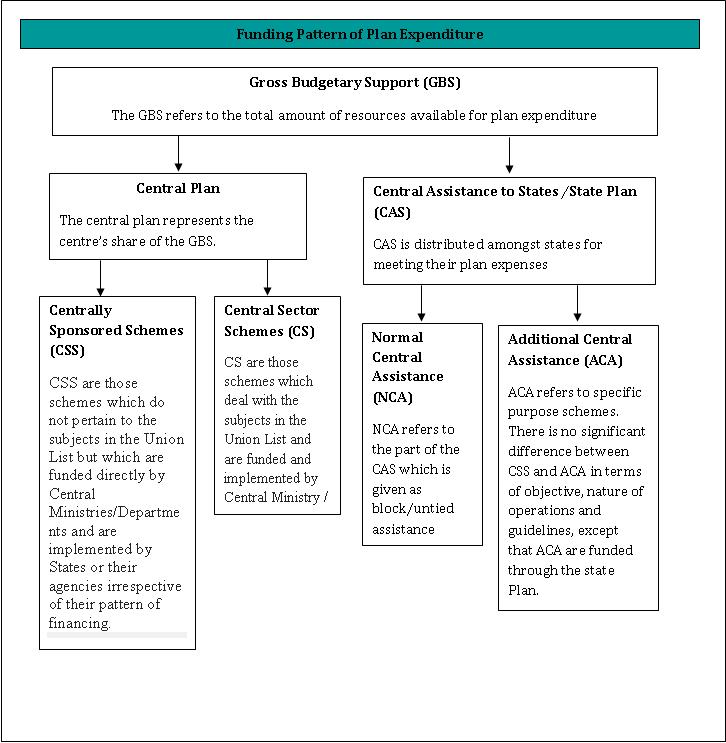
The Case of the Exploding Centrally Sponsored Schemes (CSS)
21 May 2012
In last week’s blog on the Rangarajan Committee Report, Anirvan outlined the process of fund flows in Centrally Sponsored Schemes (for more details see here). Piqued and interested in exploring the topic of Centrally Sponsored Schemes, I decided to do some digging of my own. In the process of my investigation, I came across an interesting report recently published by a committee appointed by the Planning Commission on ‘Restructuring of Centrally Sponsored Schemes’ (details of the report can be found here).
Before launching into the findings of the Report it is important to first gain some clarity on the definition and objectives of CSS. CSSs refer to specific purpose schemes which are funded by the central government and implemented by states or other local agencies (See Flow Chart for details). These schemes were originally instituted to redress development concerns of national importance. For this purpose through the conduit of CSS, schematic support is provided by the central government for subjects that constitutionally fall within the domain of states.
Despite the initial intention to limit the number of CSS to matters of national policy, the Report finds a proliferation CSS across successive plan periods (1997-2012). While the total numbers of schemes have declined from the 9th Five Year Plan (FYP) when there were a total of 360 CSS, to 147 during the 11th FYP, the share of CSS in the total plan expenditure (Gross Budgetary Support) has been steadily increasing. At the end of 11th FYP, the percentage share of the CSS in the total GBS was 42%, an increase of 11 percentage point from its share at the end of the 9th FYP (See table 1 for details). A significant proportion of the allocations for CSS are accounted for by the central governments 9 Flagship schemes which alone constituted 79.4% of the total CSS provision (For more details on allocation and expenditure trends of flag ship schemes see here).
| Plan | GBS (Cr.) | No. of Schemes | CSS (Rs. Cr.) | % of CSS to GBS | Central assistance of
States and UTs (Rs. Cr.) |
Central assistance to states as a % of GBS |
| 9th plan | 316286 | 360 | 99001.68 | 31.3 | 138394 | 43.75 |
| 11th plan | 1588273.24 | 147 | 660506 | 41.59 | 397418.93 | 25.02 |
Given these trends, the Report makes a mention of several important recommendations for restructuring of CSS. The following are a list of some of major proposals made by the Report;Apart from CSS, plan expenditure at the state level is also funded through the state level plans which are funded by Central Assistance to States (CAS) grant. CAS refers to the share of the State in the total GBS. CAS is essentially the budget that is distributed amongst the states for meeting their Plan expenses. In its findings the Report notes that the proliferation of CSS, has been associated with a decreasing share of the Central Assistance to States in the GBS. The share of CAS as a percentage of GBS has decreased from 43.7% (9th FYP) to 25% at during the 11th FYP. The decreasing share of the CAS represents a point of concern given that it represents a departure from the 1960s understanding regarding the division of the GBS. As per this understanding the share of the Central Plan and the State was required to be in ratio of 60:40. The Report however notes that not only is share of the central assistance to states decreasing; the share of Normal Assistance to States (NCA) has also reduced during successive plan periods. From a state’s perspective this is worrying primarily because the NCA constitutes that part of the state plan which is given in the form of block/ untied grant. The NCA, thereby represents the funds available to states for making plans according to their own needs. The share of NCA was originally determined in the 1969 National Development Council, when it was decided that the centre could provide schematic support (CSS) so long as such support does not exceed 1/6th of the amount to be given for block assistance (NCA). Despite such stipulations, the NCA to states during the 11th FYP was Rs 1,07,101 Crore which represented 16% of the total CSS funds (Rs. 6,60, 506 Crore).
1) Restructuring of CSS into three categories; 1) Flagship schemes which will address major national interventions required for education, health, irrigation, urban development, infrastructure, employment and other identified sectors. 2) Major sub sector schemes to address development problems of sub sectors of major sectors such as agriculture, education and 3) Sector umbrella schemes which will address sectoral gaps to help improve effectiveness of plan expenditures. Based on these criteria the report proposed that the total number of schemes can be reduced to 59.
2) To ensure that there is no proliferation of CSS, the report recommends that all new schemes must fall into the above three categories with new interventions being confined to Flagship schemes only. Other new schemes should become part of sub sector schemes or umbrella schemes.
3) The NCA to states should not be reduced to below 10% of GBS to enable states to have adequate flexible untied funds for their plan.
The extent to which these recommendations will be followed remains to be seen. It is however important to note that with the publishing of the Report of Restructuring of CSS and the Rangarajan Committee Report, it is increasingly recognized that the proliferation of CSS is a concern which needs to be addressed. While this is an important recommendation, the larger issue of how CSSs have structured accountability relations between the centre and the state, is a consideration that has been largely left out of the discussion. Given that the defense for schematic transfers has in part been based on ensuring the accountability of public expenditure, framing the discourse around such concerns is perhaps an important starting point for a revaluation of the role and growth of centrally sponsored schemes.






